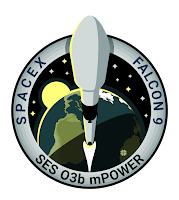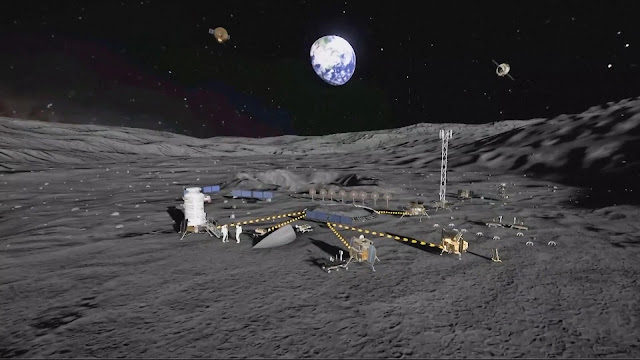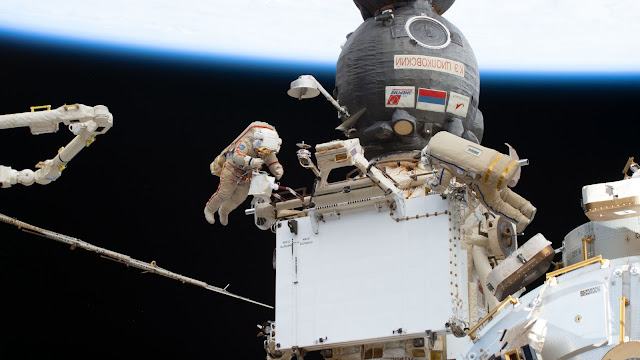NASA - X-59 QueSST patch.
April 27, 2023
Fifty years ago, the federal government banned all civilian supersonic flights over land.

Image above: NASA’s X-59, seen in this illustration, is designed to fly faster than sound but generate quieter sonic “thumps” rather than booms. To test the public’s perception of this noise, part of the Quesst plan includes flying the X-59 over several communities to survey how people react. Image Credit: Lockheed Martin.
The rule prohibits non-military aircraft from flying faster than sound so their resulting sonic booms won’t startle the public below or concern them about potential property damage.
Officially put into effect on April 27, 1973, the ban’s introduction was strongly influenced by public opinion surveys in cities where supersonic military jets were flown overhead, and many folks said they didn’t like what they heard or the way their windows rattled because of the sonic booms.
Although some research suggested ways to soften the impact of sonic booms, aeronautical technology during the 1960s and early 1970s wasn’t sophisticated enough to fully solve the problem in time to prevent the rule from being enacted.
But today, NASA is working on a solution.
“It’s a rule that many people today aren’t aware of, yet it’s at the heart of what our Quesst mission with its quiet supersonic X-59 airplane is all about,” said Peter Coen, NASA’s Quesst mission integration manager.
NASA’s X-59 is designed to fly faster than sound, but with drastically reduced noise – people below would hear sonic “thumps” rather than booms, if they hear anything at all. To test the public’s perception of this noise, part of the Quesst plan includes flying the X-59 over several communities to survey how people react.
NASA will deliver the results to U.S. and international regulators, who will consider new rules that would lift the ban that has been in place for so long. The goal is for a regulatory shift that focuses on the sound an aircraft creates, instead of a speed limit.
“We’re definitely ready to write a new chapter in the history of supersonic flight, making air travel over land twice as fast, but in a way that is safe, sustainable, and so much quieter than before,” Coen said.
Boom Boom
The origins of the federal ban on supersonic flight go back to 1947, the first time the rocket-powered XS-1 airplane broke the sound barrier and initiated the heroic era of faster-than-sound research.
At first, it was all about learning to fly X-planes faster and higher. No one gave the sonic booms a second thought, mostly because few people lived where the research was taking place.

Image above: An Air Force B-58 Hustler supersonic bomber like this one was one of many military jets used during the 1960s to generate sonic booms over U.S. cities to see how the public would react to the sound. The research helped lead to a ban on civilian faster-than-sound flight over land beginning in 1973. Image Credit: Air Force.
Despite early interest in what was then a mysterious phenomenon created as an airplane flies faster than the speed of sound and generate atmospheric shock waves we hear as sonic booms, there were few tools and only limited data available to help understand what was happening.
But as the Air Force and Navy began to deploy large numbers of supersonic jets at bases around the nation, interest in sonic booms quickly grew as more of the public became exposed to the often-alarming noise.
Beginning in 1956 and continuing well into the 1960s, the Air Force, Navy, NASA, and the Federal Aviation Administration (FAA) employed resources to study how sonic booms formed under various conditions, what their effects might be on buildings, and how the public would react in different locations.
Through those years, using many types of supersonic jets, residents of Atlanta, Chicago, Dallas, Denver, Los Angeles, and Minneapolis, among others, all were exposed to sonic booms from military fighter jets and bombers flying overhead at high altitude.
Two concentrated studies – one over St. Louis in 1961 and the other over Oklahoma City in 1964 (dubbed Bongo and Bongo II, respectively) – left no doubt the public was not fully supportive of routine sonic booms coming down from above.
The tests generated national news and fueled strongly negative sentiment about supersonic flight.
The Supersonic Transport
As this work to better understand and predict sonic boom formation continued and gave rise to the first notions of how to minimize a sonic boom by changing an airplane’s shape, the U.S. government began to work with industry in an attempt to develop the Supersonic Transport, or SST.
The announcement of the SST by President John F. Kennedy in June 1963 raised interest in studying and mitigating sonic booms from a technical standpoint, turning the research into a top priority.

Image above: NASA’s Quesst mission graphic displays stylized supersonic shockwaves encircling the research aircraft, above a community of homes. The imagery highlights the ground-breaking research that will be conducted across several U.S. cities during this mission. Image Credit: NASA.
The SST project aimed to produce the prototype for a new commercial supersonic airliner, capable of carrying as many as 300 passengers anywhere in the world at speeds as great as three times the speed of sound.
(Note that the speed of sound varies depending on things like temperature and altitude. At sea level and 68 degrees Fahrenheit it is 768 mph)
The aviation community was racing to develop its understanding of supersonic shockwaves to reduce the SST’s potential sonic boom noise levels. But those researchers couldn’t outpace the speed at which environmental concerns and policy discussions were cropping up, threatening to ground the aircraft before it was even built.
Three events during the summer of 1968 demonstrated this:
- On May 31, during a ceremony at the Air Force Academy in Colorado, an F-105 Thunderchief fighter jet broke the sound barrier flying 50 feet over the school grounds. The sonic boom blew out 200 windows on the side of the iconic Air Force Chapel and injured a dozen people.
- A week later, on June 8, the New York Times published an editorial using the incident in Colorado to underscore the danger sonic booms presented to the nation’s peace and well-being, claiming many are “scared to death of it.”
- This was followed on July 21 with Congress directing the FAA to develop standards for the “Control and Abatement of Aircraft Noise and Sonic Boom.”
Within a couple of years, the FAA formally proposed a rule that would restrict operation of civil aircraft at speeds greater than Mach 1. Then in May of 1971 Congress cancelled the SST program and the rule banning civil supersonic flights over land went into effect two years later.
During this same time, Great Britain and France were developing and test flying the Concorde, which went on to provide commercial supersonic air travel between 1976 and 2003. There were many reasons for its demise, including a deadly crash in 2000, but economic and environmental issues top the list. Restrictions against flying faster than sound over land due to the ban in the U.S. and elsewhere greatly limited its revenue-generating options.
Speed vs. Sound
Moving ahead, to lift the ban and enable a viable market for supersonic air travel over land, the idea is that regulators would base new rules on a different standard than before.
The speed limit created in 1973 didn’t consider the possibility that an airplane could fly supersonic yet did not create sonic booms that could affect anyone below. It was a fair assessment at the time because the technology required to make that happen didn’t exist yet.
“And now it does,” Coen said. “So, instead of a rule based solely on speed, we are proposing the rule be based on sound. If the sound of a supersonic flight isn’t loud enough to bother anyone below, there’s no reason why the airplane can’t be flying supersonic.”

Image above: NASA’s X-59 sits in support framing while undergoing the installation of its lower empennage, or tail section, at Lockheed Martin Skunk Works in Palmdale, California in late March. Image Credit: Lockheed Martin.
During the past half-century, NASA’s aeronautical innovators methodically worked through the challenge of quieting the boom. Quesst’s X-59 is on the path to proving that technology, with community overflights and the all-important public surveys to follow soon after.
Still, public acceptance of supersonic aircraft flying overhead today goes far beyond sonic boom noise. Airport noise, emissions, and climate impact are all factors that still need to be addressed.
With its government, industry, and academic partners, NASA is working to solve those challenges as well. But none of that will matter until the first step – lifting the half-century-old ban on supersonic flight over land – is accomplished.
“We are very excited to be making this big step forward, but we recognize that more needs to be done,” Coen said.
Much of this article is based on the work of Lawrence Benson, who wrote the official NASA history book “Quieting the Boom: The Shaped Sonic Boom Demonstrator and the Quest for Quiet Supersonic Flight.” Read it here: https://www.nasa.gov/connect/ebooks/nasa-ebook-quieting-the-boom
Related links:
X-59: https://www.nasa.gov/mission_pages/lowboom/vehicle
Quesst: https://www.nasa.gov/mission_pages/lowboom/index.html
Supersonic Flight: https://www.nasa.gov/subject/7566/supersonic-flight
Aeronautics: https://www.nasa.gov/topics/aeronautics/index.html
Images (mentioned), Text, Credits: NASA/Lillian Gipson/Aeronautics Research Mission Directorate/Jim Banke.
Greetings, Orbiter.ch

















.svg.png)


























